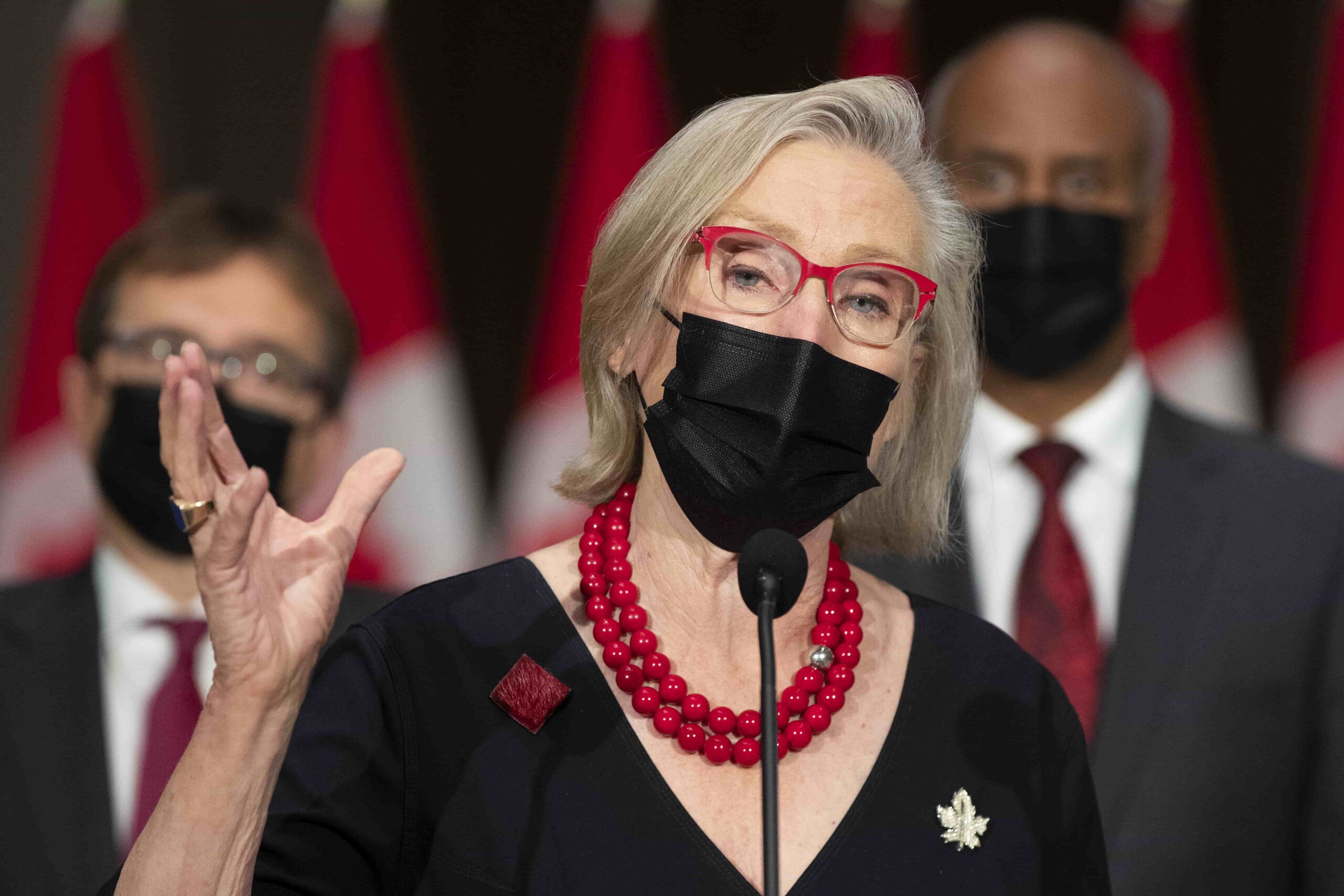After the last election, the federal government created the first-ever addictions and mental health Cabinet portfolio, as a complement to the actions of the federal health minister. While delivery of health care is largely a provincial responsibility, it is the intention of Prime Minister Justin Trudeau to work with the provinces to implement newly proposed mental-health funding, and he has tapped former minister of Crown-Indigenous relations Carolyn Bennett to lead negotiations. Included in those talks will be the needs of LGBTQ2S+ communities, who face higher rates of mental health challenges.
Bennett was the country’s first minister of state for public health under Paul Martin, and considers this new portfolio to be an extension of that work.
“We need to do everything we can to keep people well, and that includes their mental health,” says Bennett. “It is a shared responsibility [with provinces]. And one of the examples that I use is that at the beginning of COVID-19, we knew that this would be extraordinarily stressful on people’s mental health. The federal government was able to put together a consortium [under the banner Wellness Together Canada] that had over 2.2 million visits and was very well received by the provinces and territories.”
According to Bennett, 42 percent of Wellness Together Canada users self-identified as LGBTQ2S+; in the user feedback survey of about 600 participants, 3.3 percent identified as genderqueer, and 26.9 percent identified as LGBTQ2S+.
Because there is a higher prevalence of mental health and addiction issues among LGBTQ2S+ communities, Bennett says that there is a need for tailored programs to ensure that people can access help and care. To that end, she says she is working with Minister for Women and Gender Equality and Youth Marci Ien on things like the LGBTQ2 Community Capacity Fund in an effort to build up support within communities.
“It’s best if communities can identify what they need,” Bennett says, citing as an example the Dr. Peter Centre in Vancouver, a pioneer in safe substance consumption that has been saving lives by preventing overdose deaths and the spread of HIV/AIDS.
Bennett says that working with provinces and territories (along with other stakeholders) to develop standards that feed into a national strategy for mental health and substance use will allow the government to build a separate federal health transfer for provinces and territories. That transfer will give them an opportunity to dedicate funding to under-served communities.
But transfers to provinces haven’t always gone to the programs that they are supposed to fund, largely because many provinces balk at receiving funds with strings attached. For example, when federal health transfers were increasing at 6 percent per year, provincial health spending only grew by approximately 2.2 percent, give or take, meaning that those dollars were being spent elsewhere.
“How do we make sure that the money that goes to provinces and territories ends up actually in mental health and substance use, and also in the projects that are for people who need it most?” Bennett asks.
Bennett doesn’t have an answer. But she does say that the government, along with the researchers trying to evaluate programs country-wide, need more data in order to identify provincial and territorial transfer needs.
“As we move to national standards about what anybody should be able to expect wherever they live in Canada (and [as] those lead into the strategy, which leads into the transfer), you would want some principles—not only of what we want to see, but the data we need to show that there is value for the transfers being delivered,” Bennett says.
She notes that there is a successful transfer model: the dedicated early learning and child care transfers that most provinces receive, where national standards are built into the funding. Bennett hopes something similar can emerge from the negotiations for the mental health transfer. She wants the new transfer to include a mental health human resources strategy to ensure that provinces and territories are able to recruit all kinds of mental health professionals, particularly when it comes to gender-affirming care.
Bennett says that she will be working with Ien on implementing the forthcoming LGBTQ2 Action Plan, and says that projects like Wellness Together could be the catalyst to getting people the care they need.
“In an action plan, we have to make sure that all Canadians can become allies and understand that being your authentic self is so important [to] mental health,” says Bennett.
As part of her work with addictions, Bennett notes that there are currently 17 safe-supply programs running in various provinces, and that Health Canada has approved an application for supplying diacetylmorphine (a.k.a. heroin). In some safe supply and overdose prevention programs, Bennett adds, they are using fentanyl patches and hydromorphone, and that one program has vending machines with prescription-grade products where patients can get their daily supply without stigma. “We’re seeing huge success, and in the evaluations, it has really reduced stigma, it has reduced crime in the area and it has reduced the use of injectables [and has] saved lives,” says Bennett.
The minister has a tough job ahead of her in negotiating with the provinces, particularly when it comes to ensuring that federal funds are going to the places that need them, including LGBTQ2S+ groups. Hopefully the forthcoming LGBTQ2 Action Plan will be a roadmap to identify those needs, so that the provinces can be held to account when it comes to disbursing funds.


 Why you can trust Xtra
Why you can trust Xtra


